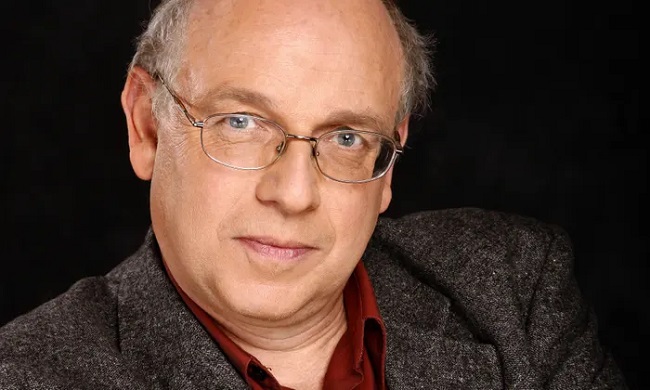On the balcony of their sixth-floor Monte Carlo condominium, a brother and sister are talking. Time: the afternoon of the Grand Prix in May of the 1970s. The dinghies in the turquoise harbor shallows sparkle in the sunlight.
The foliage on the trees is so dense that it seems dark. Stéphane Bourgoin, the older sibling, is a young man. To see his sister Claude-Marie Dugué, he traveled all the way from Paris.
Dugué watches the racecars go around the city and careen onto the straightaway on Boulevard Albert 1er from his condominium. Bourgoin leans in close and reveals the horrific news that his lover was just murdered and “torn up into bits” in America, where he had been living. She identified herself as Hélène.
It was one of those “remember exactly what you were doing that day at that particular moment, the news is so startling and indelible,” as Dugué recently reflected on Bourgoin’s revelation.
Shock and disbelief amidst the roar of Formula 1 motors. The Bourgoin and Dugué families were related through a common father but maternal lines ran in different directions.

They’d only recently become friends, so Dugué didn’t feel comfortable asking questions about a woman she’d never met or heard of before. She finally spoke up about how unsettling the situation was for her. It was as simple as her expressing regret to Bourgoin.
Who is Expert on Serial Killers
On March 14, 1953, Stéphane Bourgoin was born in France, making him a real crime writer. For a long time, he passed himself off as an authority on serial killers, but in 2020, he revealed that he had made up a lot of his stories. Stéphane Bourgoin is the youngest of four children born to Jean Bourgoin, a military engineer, on March 14, 1953, in Paris.
He was kicked out of high school multiple times, therefore he doesn’t have a diploma. According to Bourgoin, he moved to the United States in the early 1970s and, in 1976, in Los Angeles, he discovered the body of his lover, whom a serial killer had murdered, raped, and disfigured. He claimed that the incident prompted him to research serial killer psychology.
A confession from Bourgoin in 2020 revealed that the story was entirely made up, inspired by the 1975 murder of 24-year-old Susan Bickrest by serial killer Gerald Stano. Thousands of copies of Bourgoin’s books have been sold in France, and he has also made dozens of films. His knowledge of serial killers was widely recognized as the best in France. On occasion, he delivered lectures to law enforcement and criticized media portrayals of serial killers.
The Unravelling of an Expert on Serial Killers
Stéphane Bourgoin claimed he became obsessed with serial killers after witnessing the horrible murder of his lover at the hands of a serial killer. This argument, like so many of his others, fell apart under closer examination. Stéphane Bourgoin rose to prominence thanks to his renowned talks with convicted killers while they were behind bars.
Eventually, an unnamed group of true-crime buffs started looking into his own case. The question, “How was it?” Tolle enquired. After decades of cultivating readers’ interest in true crime, Bourgoin was well aware of the influence of fandom. But he failed to account for the sophistication of his listeners.
Fans of the genre knew better than to put their faith in human nature after repeatedly viewing documentaries, lectures, books, and DVD box sets about such dark topics as necromancy, satanism, bestiality, torture, infanticide, matricide, and patricide. Thanks to authors like the “master of noir,” they were well-versed in the art of the self-serving lie.
What Lies Beneath: The Secrets of France’s Top Serial Killer Expert
t a dinner party in the early 1990s at Stéphane Bourgoin’s Parisian house, the novelist and bookseller, then not very well-known, began to opine on the topic of serial homicide. This was a unique concept at the time. It’s no secret that serial killers have been a cultural fixture everywhere from the time of Jack the Ripper onward.
However, the French had been familiar with the concept as far back as the 15th century, when nobleman Gilles de Rais was discovered to have kidnapped, tortured, and ritualistically murdered nearly 150 young children. Yet, the term “serial murderer” had never been used to these individuals.
Only in the 1970s, and primarily in the United States where the FBI had developed a team of so-called “profilers” to arrest them, did the name “psychopath” permeate the general consciousness, along with the idea that such criminals were a breed apart, impelled by a particular, sexualized depravity.
In contrast to the rest of the world, serial murder was not yet a popular cultural phenomenon in France. Nobody at Bourgoin’s party had even a passing familiarity with it. They listened with horror, sickness, and rapt attention, just as millions of other French speakers would do in the decades to come.
Conclusion
Thousands of copies of Bourgoin’s books have been sold in France, and he has also made dozens of films. His knowledge of serial killers was widely recognized as the best in France. On occasion, he delivered lectures to law enforcement and criticized media portrayals of serial killers.



